Explore the iconic Newell Highway, New South Wales
Perhaps if we were American, we’d refer to the Newell Highway as Route 39. That’s its official designation, but we tend to just call it the Newell.
Named after Hugh Hamilton Newell, who was the first Commissioner for Main Roads in New South Wales during 1932–41, the Newell Highway stretches 1058 kilometres from Goondiwindi in Queensland to its southern terminus where it crosses the Murray River at Tocumwal. It is NSW’s longest highway and passes through 15 local government areas including iconic townships such as Boggabilla, Moree, Narrabri, Coonabarabran, Gilgandra, Dubbo, Parkes, Forbes, West Wyalong, Narrandera, Jerilderie and Finley.
While it is a north-south freight route about 400km inland from the coast, it also carries a huge number of travellers, especially caravanners, who make the pilgrimage north to warmer climes each winter, passing through the Riverina, national parks and wide-open spaces.
The Newell is also a delight for astronomers, boasting numerous observatories in the Big Sky country around Coonabarabran, Narrabri, Gilgandra and the famous Parkes Radio Telescope, better known as ‘The Dish’ and immortalised on film.
For the first time, we packed up our van and joined the annual migration north, driving up the Newell Highway in early June this year on our way to Far North Queensland.
Jerilderie
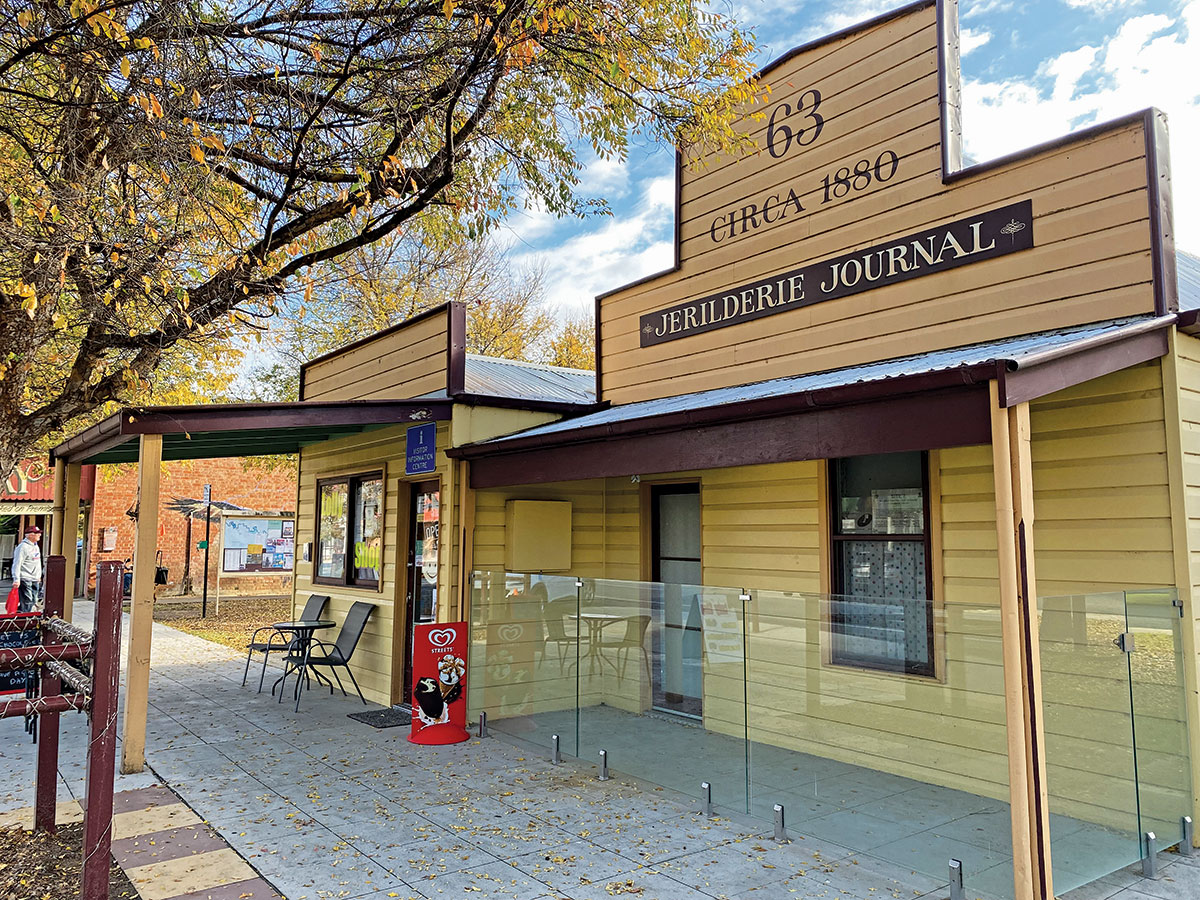
Although the Newell technically starts at Tocumwal, just over the Murray River from Victoria, we joined the highway at Jerilderie after a couple of stops in Moama and Conargo, and discovered a little town that punches way above its weight in terms of Australian history.
Just over 3.5 hours from Melbourne, Jerilderie gained lasting renown as the first and only NSW town to be held up by The Kelly Gang in 1879. Over the course of three days Ned Kelly robbed the bank of over 2000 pounds, chopped down telegraph poles to ensure no message of his robbery escaped the town, tricked and locked the town’s police officers into their own cells and held more than 30 people hostage.
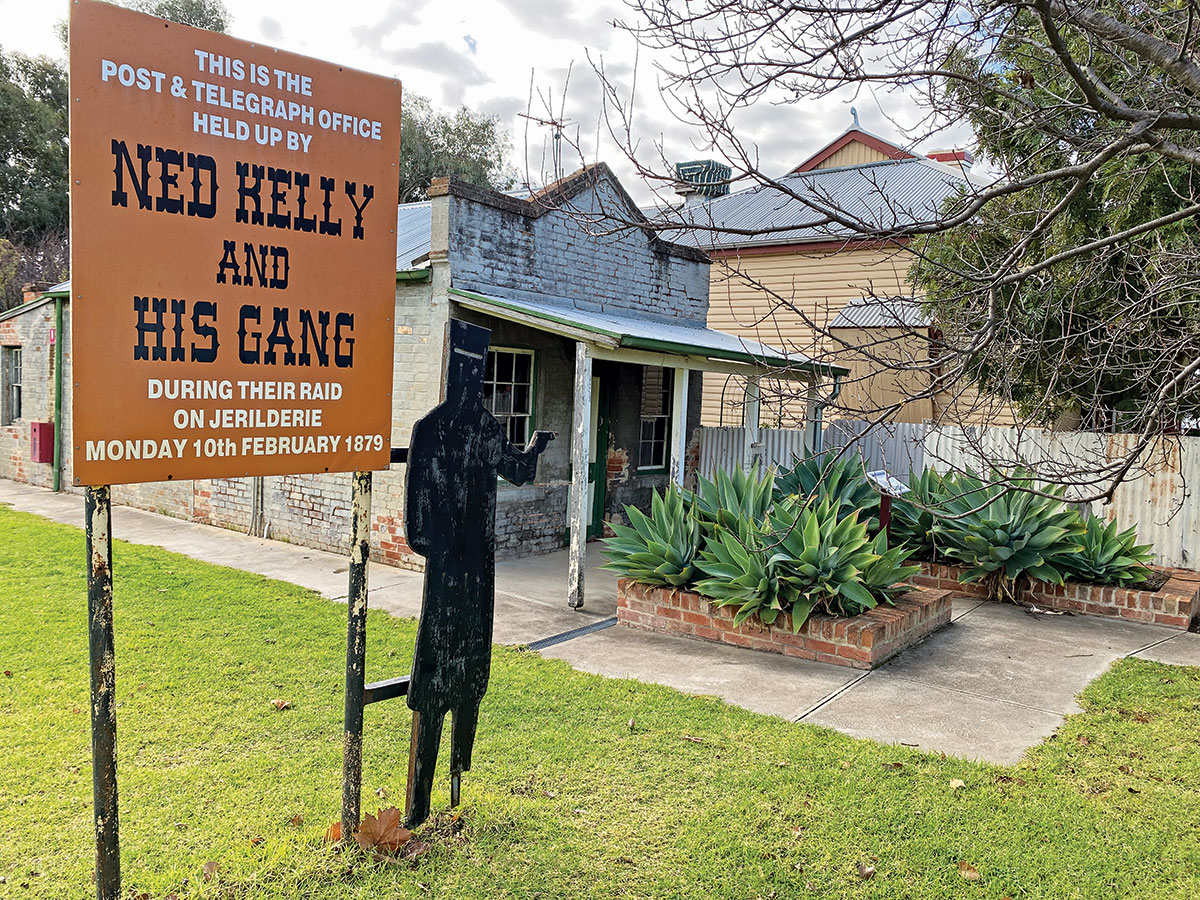
A lesser-known fact is that the true purpose of Ned Kelly’s time in this historic town was to publish a document that is now known as ‘The Jerilderie Letter’. The Jerilderie and Urana Gazette had opened the previous year (1878), and while Ned was ultimately unsuccessful at having it published, this 8000-word document giving his personal account of his actions — highlighting his plight and the corruption of the law — is a valuable piece of his and Jerilderie’s rich history.
Today you can walk in Ned’s footsteps as you visit sites along the Raid Trail — a self-guided tour of the 16 sites visited by Ned and his sidekicks. Six of the buildings directly associated with the 1879 raid are still standing.
Parkes
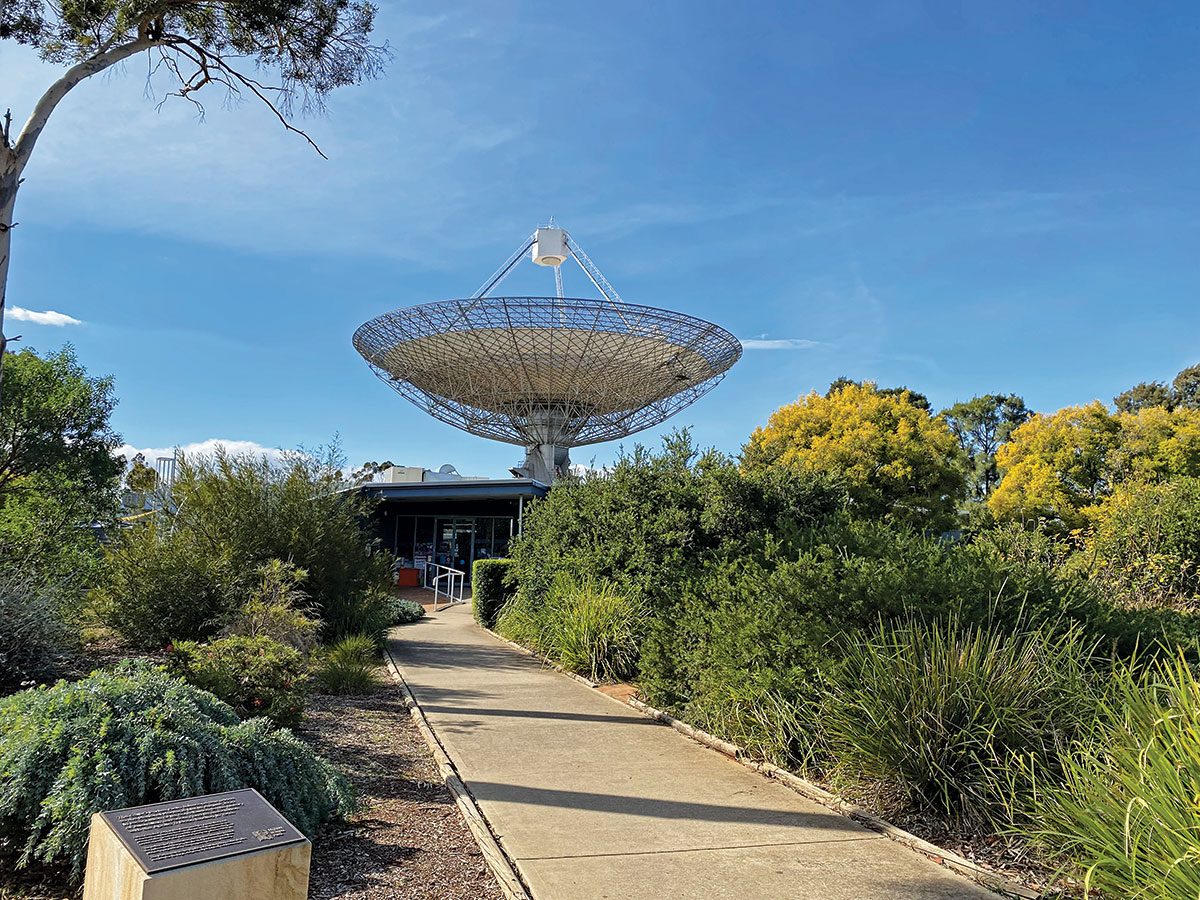
The area around Parkes remained relatively unsettled until 1862 when the discovery of gold led to a hastily erected ‘canvas’ town known as Currajong. There was a further discovery of gold in 1871 at the nearby Bushmans Gold Mine which helped the district to become one of the richest gold producing areas in the colony.
Then Premier of NSW, Sir Henry Parkes, first visited Bushmans in 1873. He was greeted by more than 3000 people and received deputations from residents seeking a new hospital, school and courthouse among other things. As a result of a petition to the Minister for Lands from local businessmen and other residents, Bushmans was renamed Parkes in honour of the great statesman.
Today there is an impressive statue of Sir Henry on the corner of Clarinda and Dalton Streets.
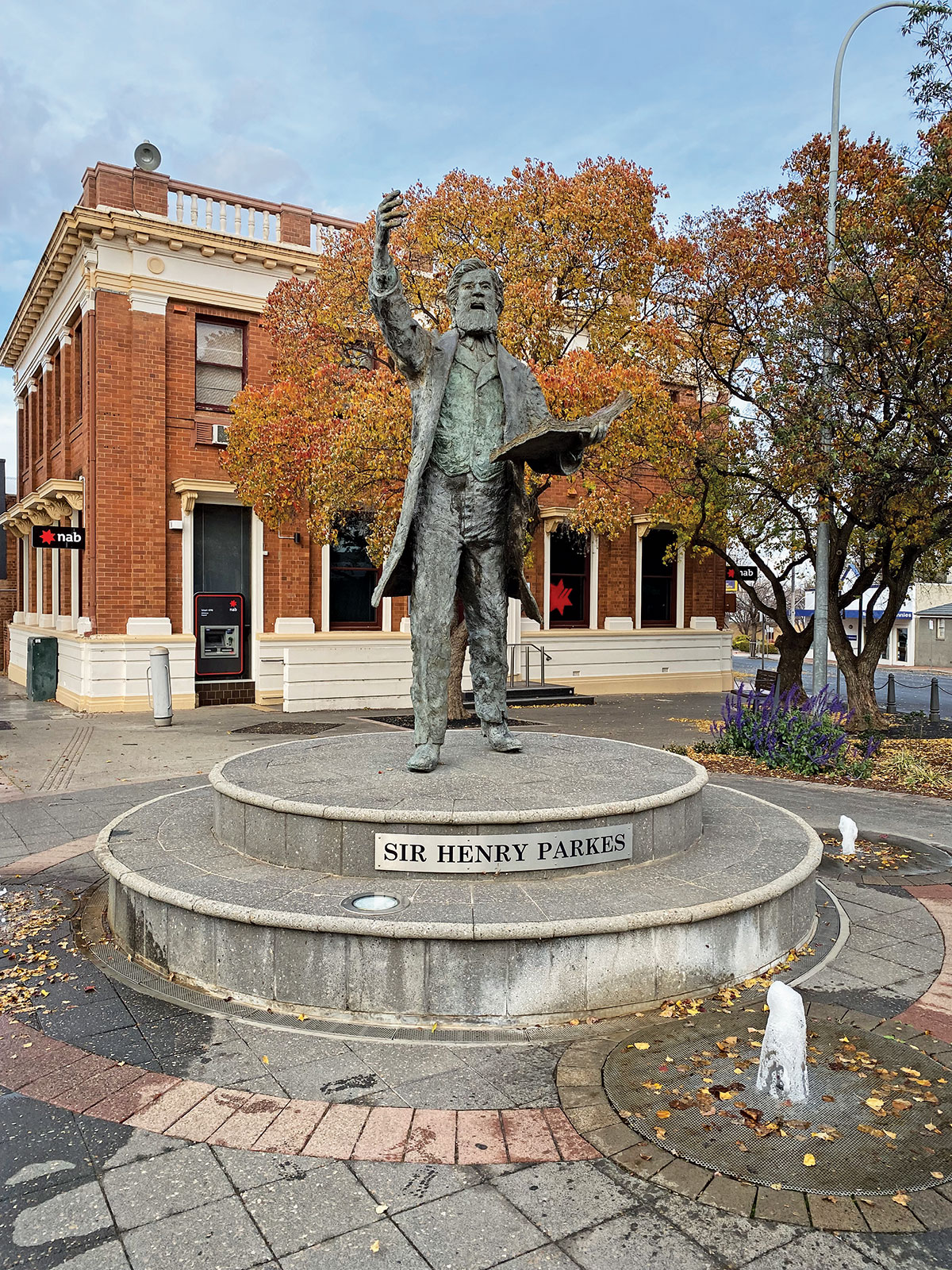
These days Parkes is just as famous for its five-day Elvis Festival held annually in the second week of January boasting more than 150 individual events including concerts, the ever-popular Elvis Gospel Service, street parade, the sashing of Miss Priscilla, the Renewal of Vows Ceremony and of course, lots of Elvis tribute artists.
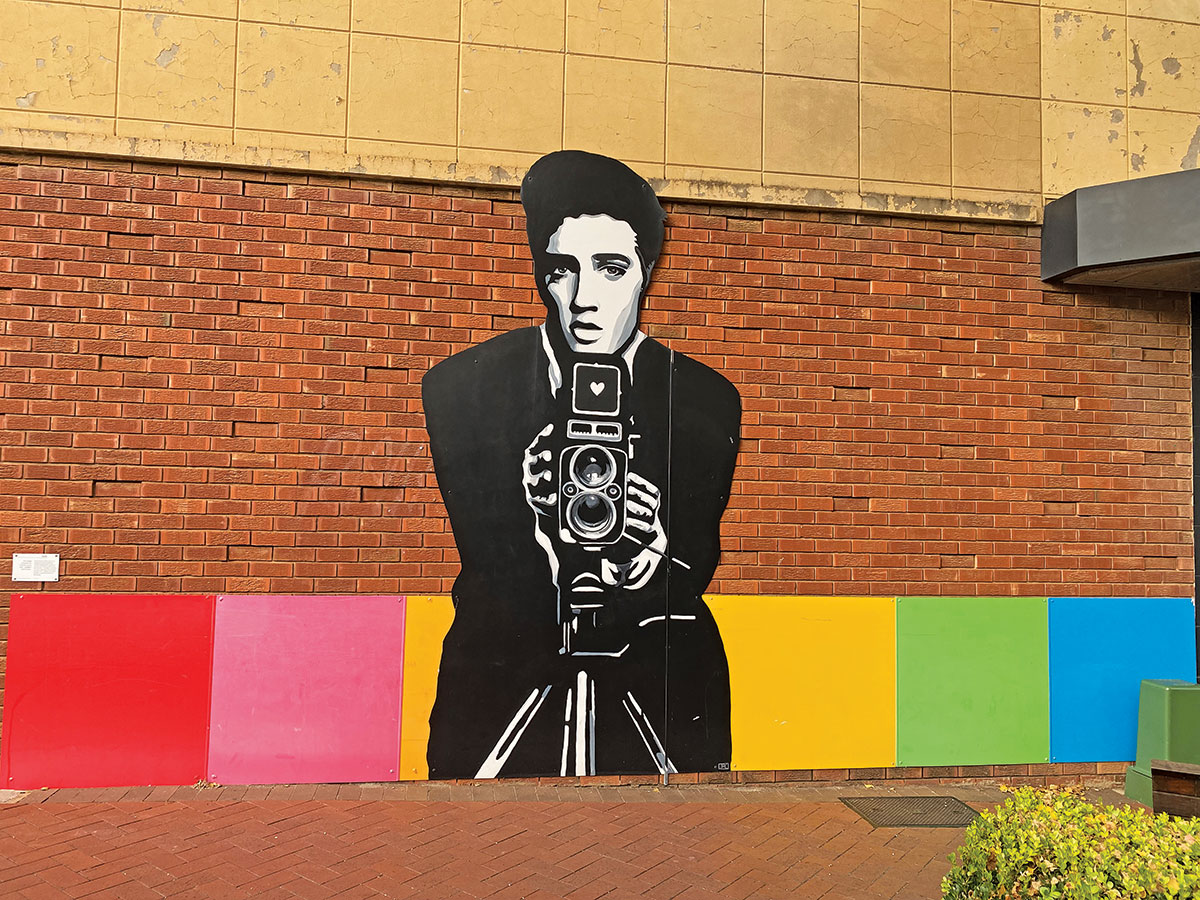
About 20 minutes north of town is The Dish — the 64m Parkes radio telescope known as Murriyang — which has been delighting travellers up and down the Newell Highway since 1961. An icon of Australian science, astronomers from across Australia and around the world use Murriyang to undertake world-class astronomical science.
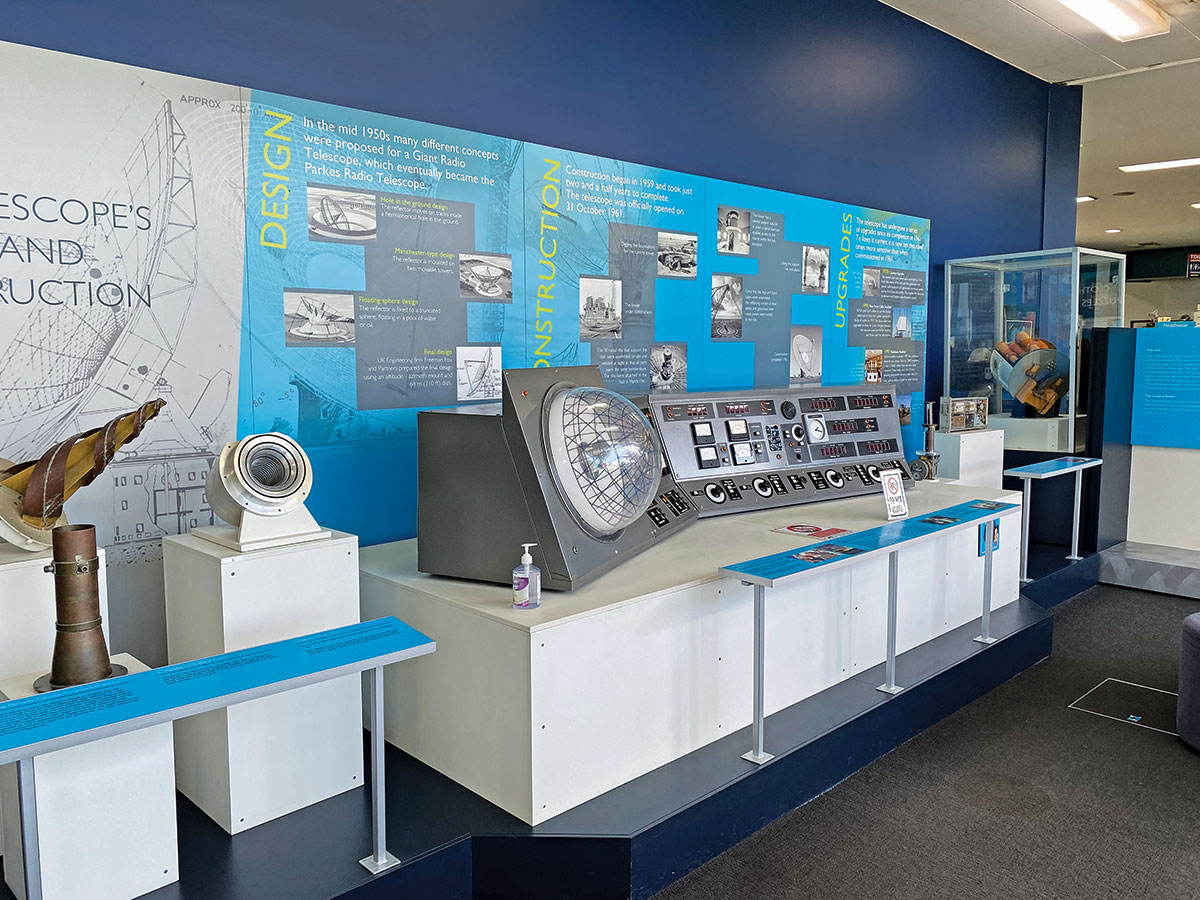
The Dish was immortalised in the Australian historical comedy-drama film starring Sam Neil that tells the story of the Parkes Observatory's role in relaying live television of humanity's first steps on the Moon during the Apollo 11 mission in 1969. The Dish was the top-grossing Australian film in 2000.
Dubbo
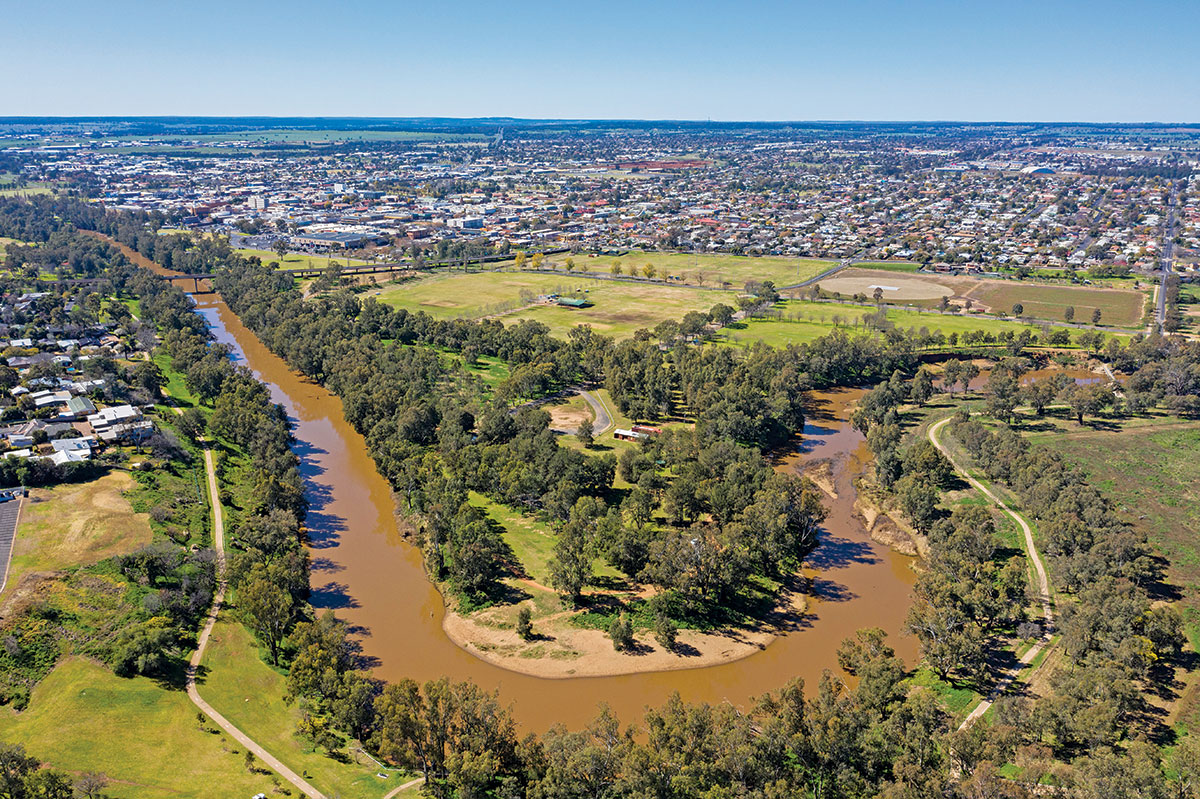
Dubbo is a thriving regional centre and its location halfway between Melbourne and Brisbane makes it a popular stop for travellers.
Among its most popular attractions for animal and nature lovers alike is the Western Plains Zoo just out of town. The zoo is home to more than 4000 animals including lions, giraffes, hippos, meerkats, rhinos, cheetahs, elephants, spider monkeys, Tassie Devils and much more. The zoo is easily accessible from town by bike on a shared pathway and, once there, you can explore the 5km zoo circuit by car, on foot or ride around on hired bikes or carts.
Another Dubbo attraction is the Old Dubbo Gaol, located on the main street (Macquarie Street), where you can wander around the unique collection of 19th century buildings and artefacts and learn the stories of prison life. This remarkably complete and intact gaol operated for 119 years from 1847 to 1966.
There are a number of caravan parks in Dubbo, but we chose to stay just out of town at the Red Earth Estate Winery, not far from the zoo. A powered site was $25 for the night, and we enjoyed dinner at the on-site Chinese dumpling restaurant with a very delicious bottle of Red Earth rosé.
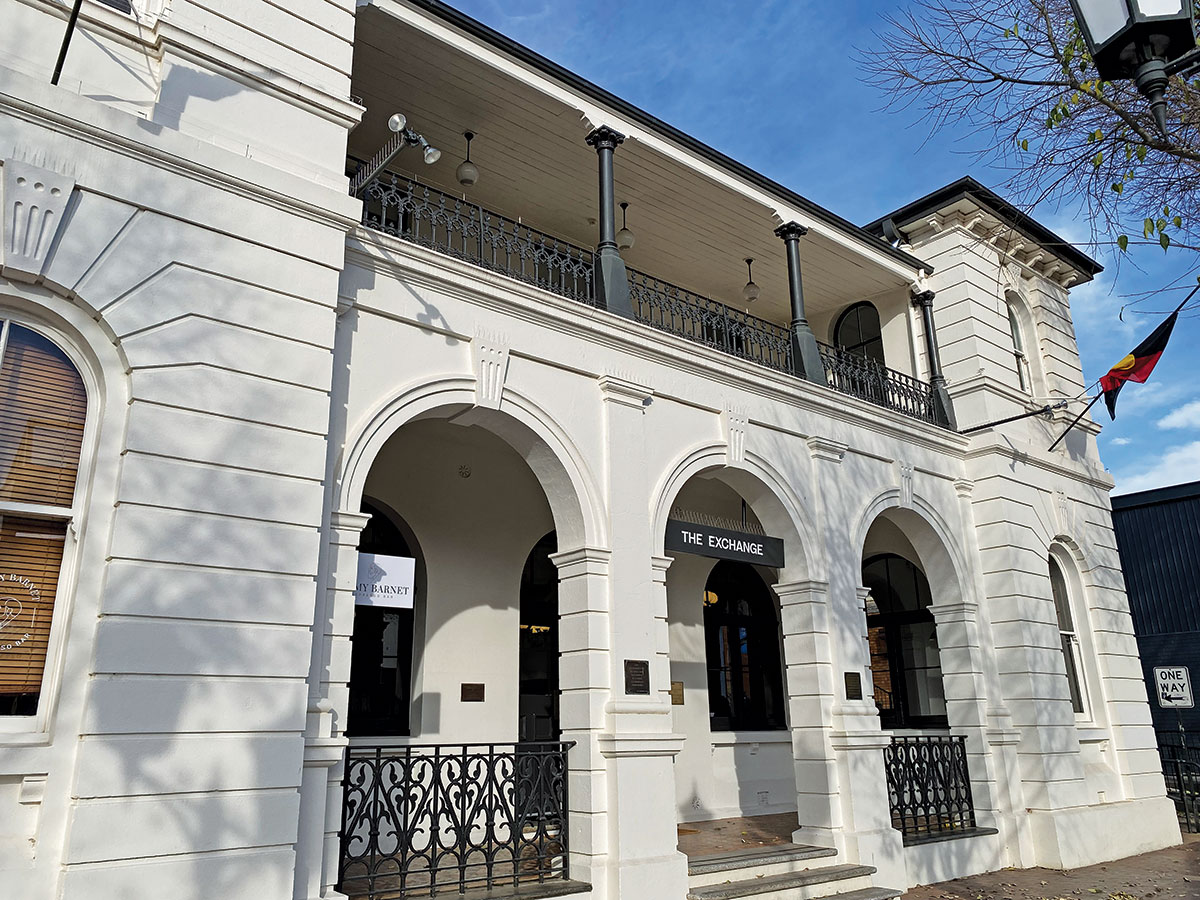
If you're after a place to take the kids, try out the Dubbo Regional Adventure Playground, which is conveniently located next to the botanic gardens which offers a gentle strolling experience past the large koi fish, statues and a sensory garden the kids will love.
Coonabarabran

Pilliga Pottery and Barkala Farmstay is about 23km from Coonabarabran via the Newell and then a further 10km off the highway down the unsealed Dandry Road.
Barkala Farm was originally bought and settled in 1986 by Maria and Richard Rickert, two German immigrants who hoped to create a new life and home in the Australian bush for their growing family. Today, nestled on the edge of the Pilliga Forest, it has been transformed into an eclectic destination featuring farmstay accommodation, camping, a huge pottery workshop and an on-site cafe.
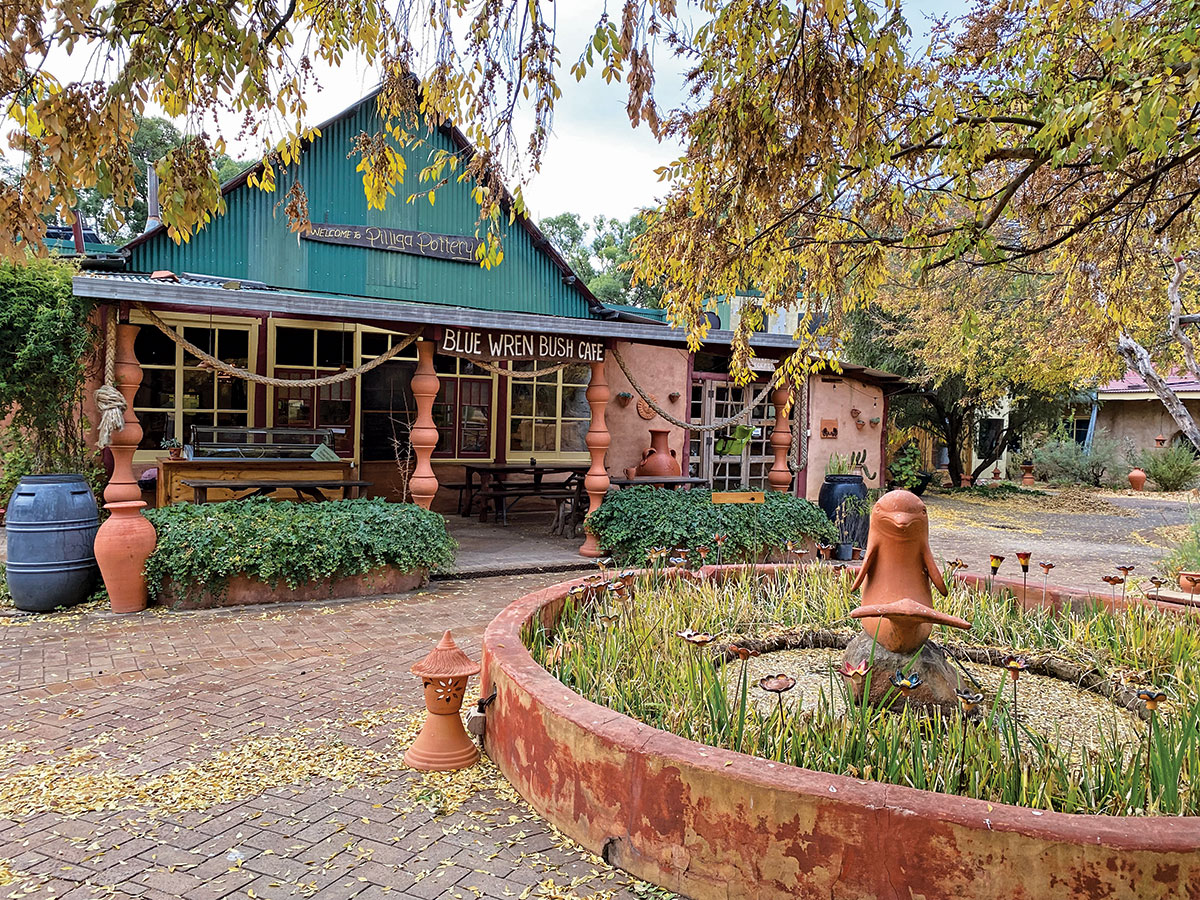
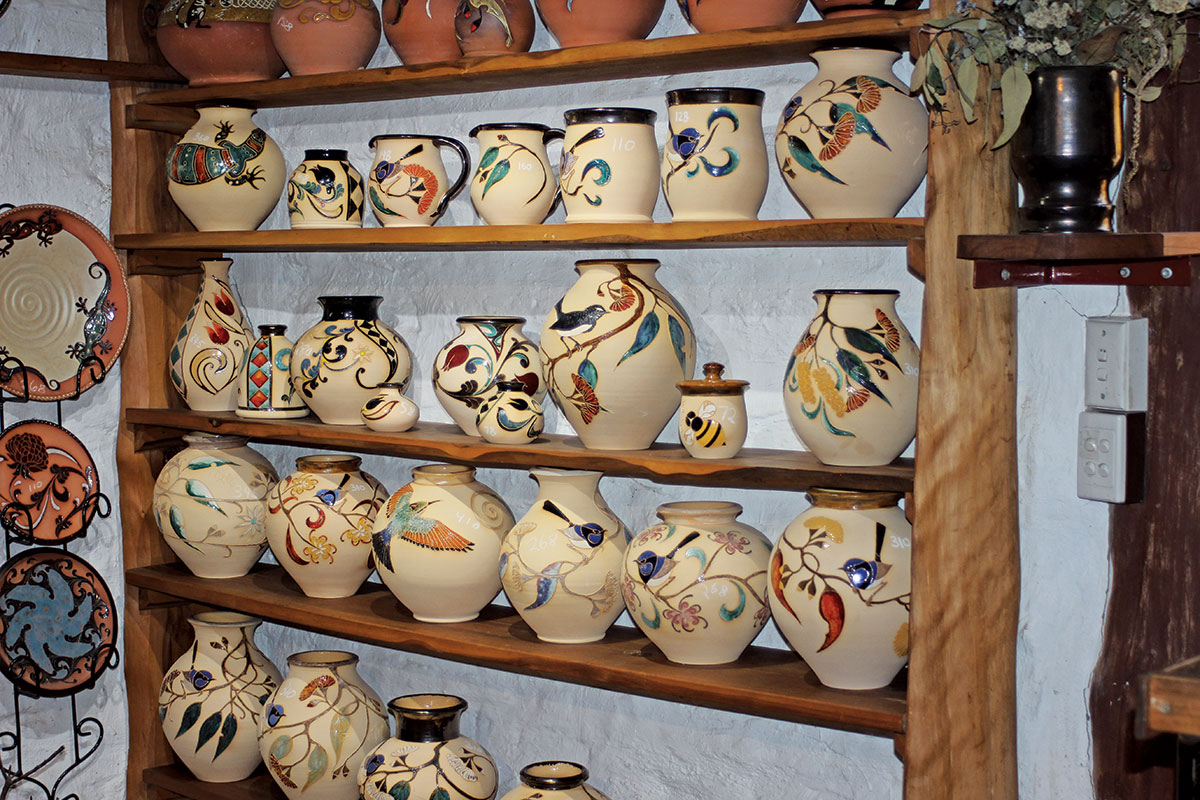
Maria and Richard built all the unique buildings on their property, most of which are mud brick and rammed earth, sourcing materials harvested from the farm, collected second-hand, crafted by friends or created from scratch in the pottery studio.
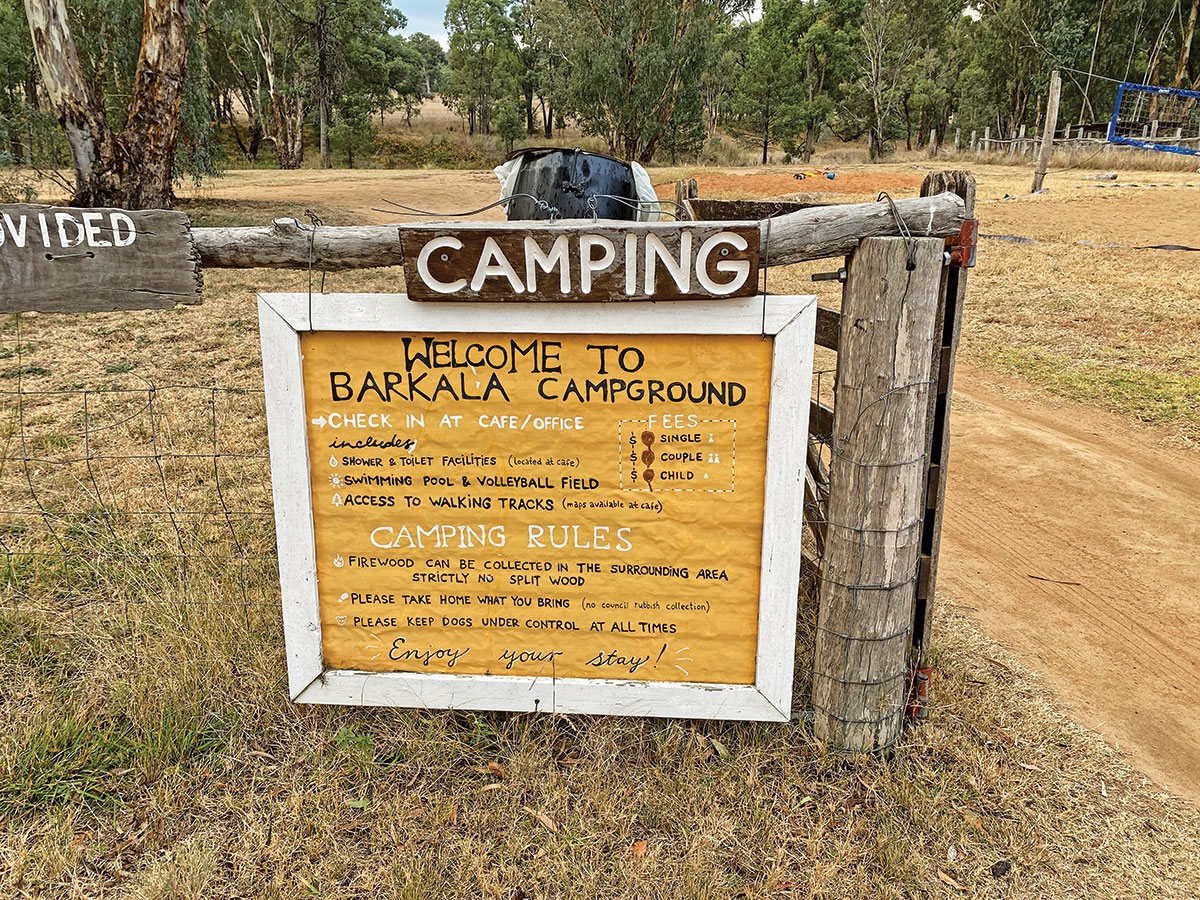
Farmstay accommodation includes the Old Schoolhouse, the Studio, the Poet’s Cottage and the Farmhouse, as well as two campgrounds. The on-site Blue Wren Cafe serves breakfast, lunch and dinner six days a week (closed Wednesday) including pizza and German-inspired meals, such as sausages and schnitzel.
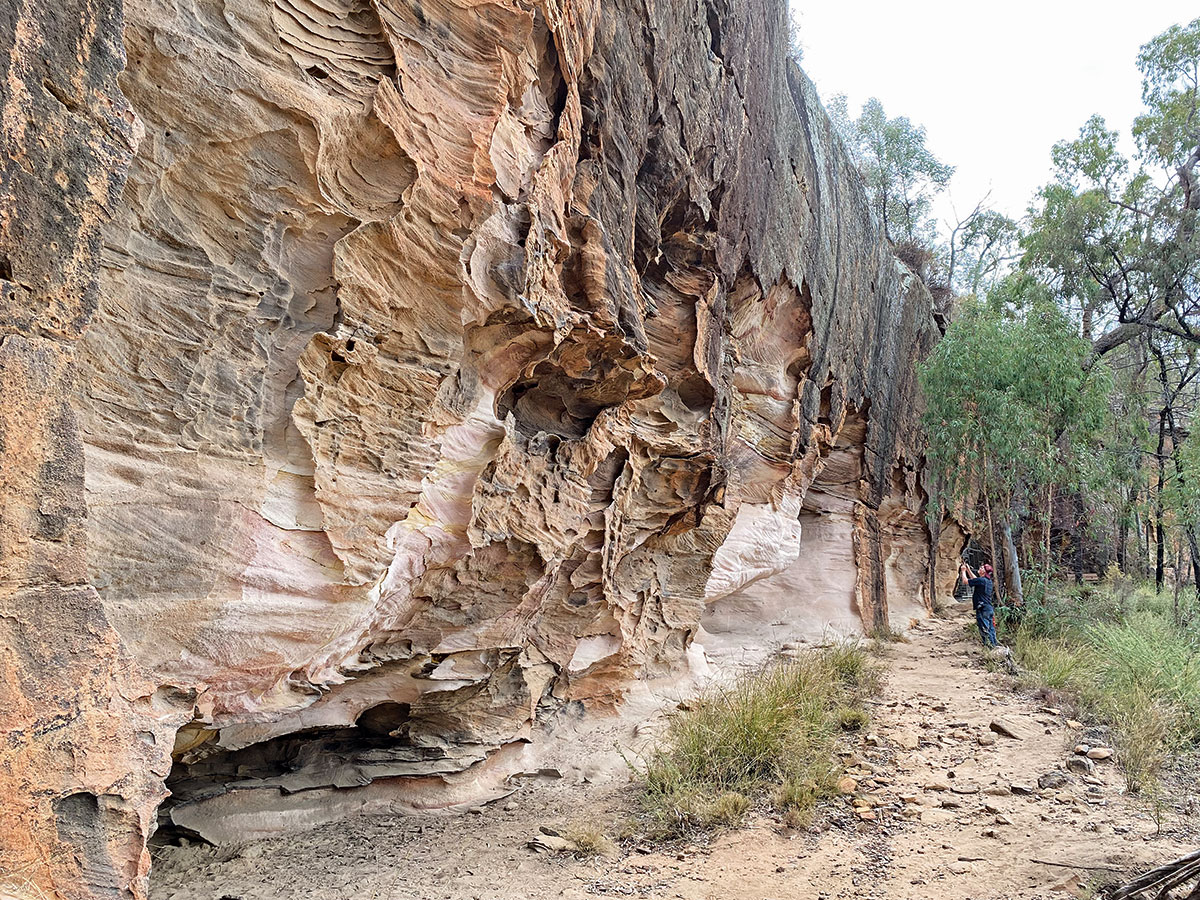
Worth a visit in this region is the nearby Sandstone Caves in Pilliga Forest. This location is not signposted from the Newell Highway at the request of the local Indigenous people and is one of the only areas of the forest that is open to the public. The 1.7km loop is graded medium and follows in the footsteps of the Gamilaroi (Kamilaroi) people and shows off the natural beauty of the area. The track passes through scenic forest to the impressive sandstone hills, with some containing ancient Aboriginal rock engravings.
Narrabri
Narrabri has a lot to offer so spend a couple of days if you can. The local Visitor Information Centre is a great place to start and speak to the knowledgeable staff about the best places to check out.

We took a drive to the top of nearby Mt Kaputar (located in Mt Kaputar National Park) which offers stunning views from its 1500m summit but unfortunately it was too cloudy on the day we visited. On the way back to town we stopped at the Black Snake Distillery where we chatted to owner Stephen Beale for well over an hour about the fascinating process of making Mescal type spirits from agave plants. Of course, we had a taste as well.
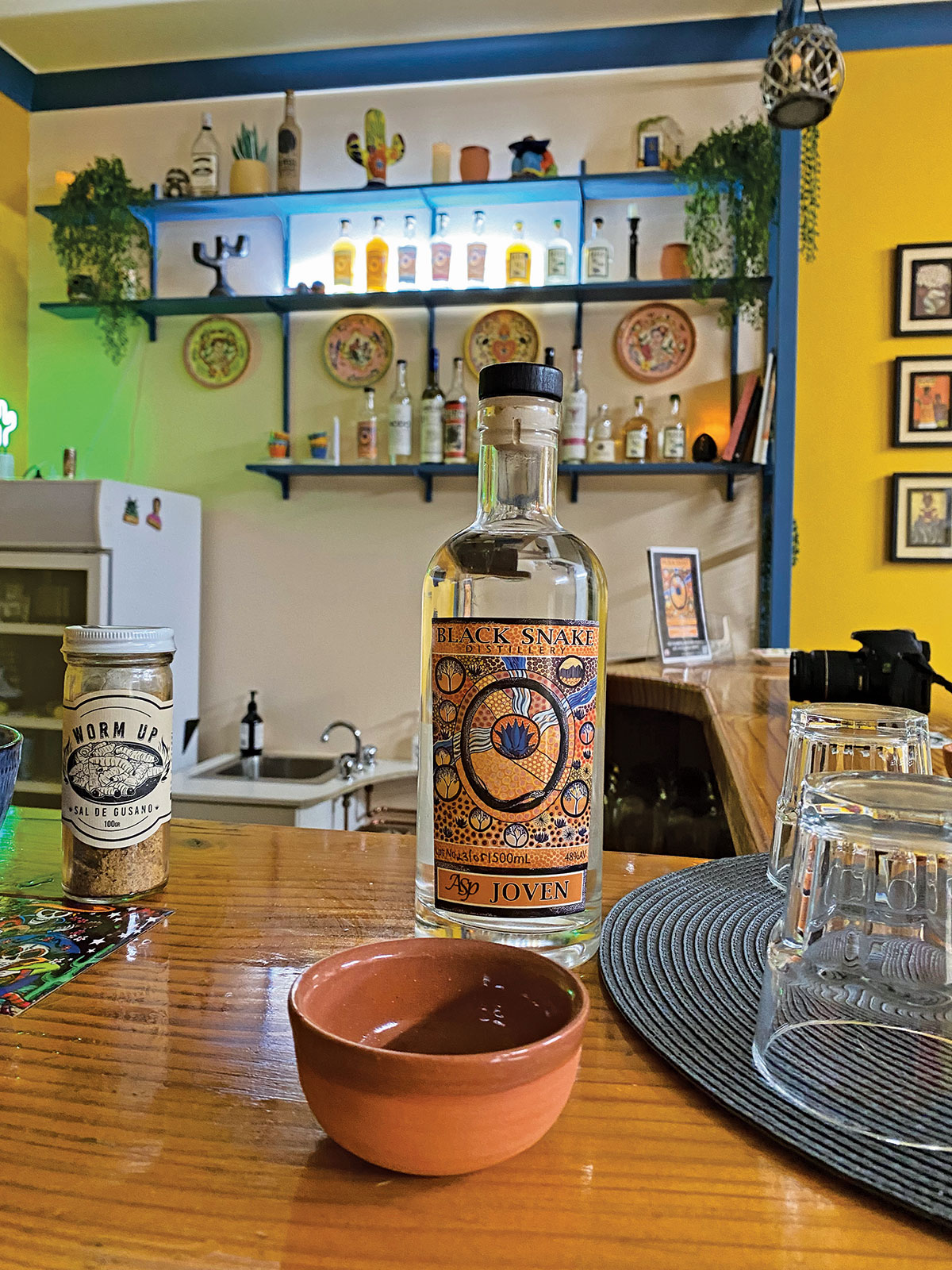
About 20km out of Narrabri and also worth a visit is Yarrie Lake — perfectly round and formed by a meteorite — and the Australian Telescope Compact Array which comprises six miniature versions of the Parkes Dish.
Inverell

After a detour to Armidale for a few days, we headed back towards the Newell via Inverell on the western edge of the northern tablelands, which is renowned for its beautiful blue sapphires.
The town of Inverell is a delight to visit and wander around, from the heritage architecture of the original buildings such as the courthouse and various hotels to the charming boutiques and trendy cafes offering Melbourne-quality coffee.
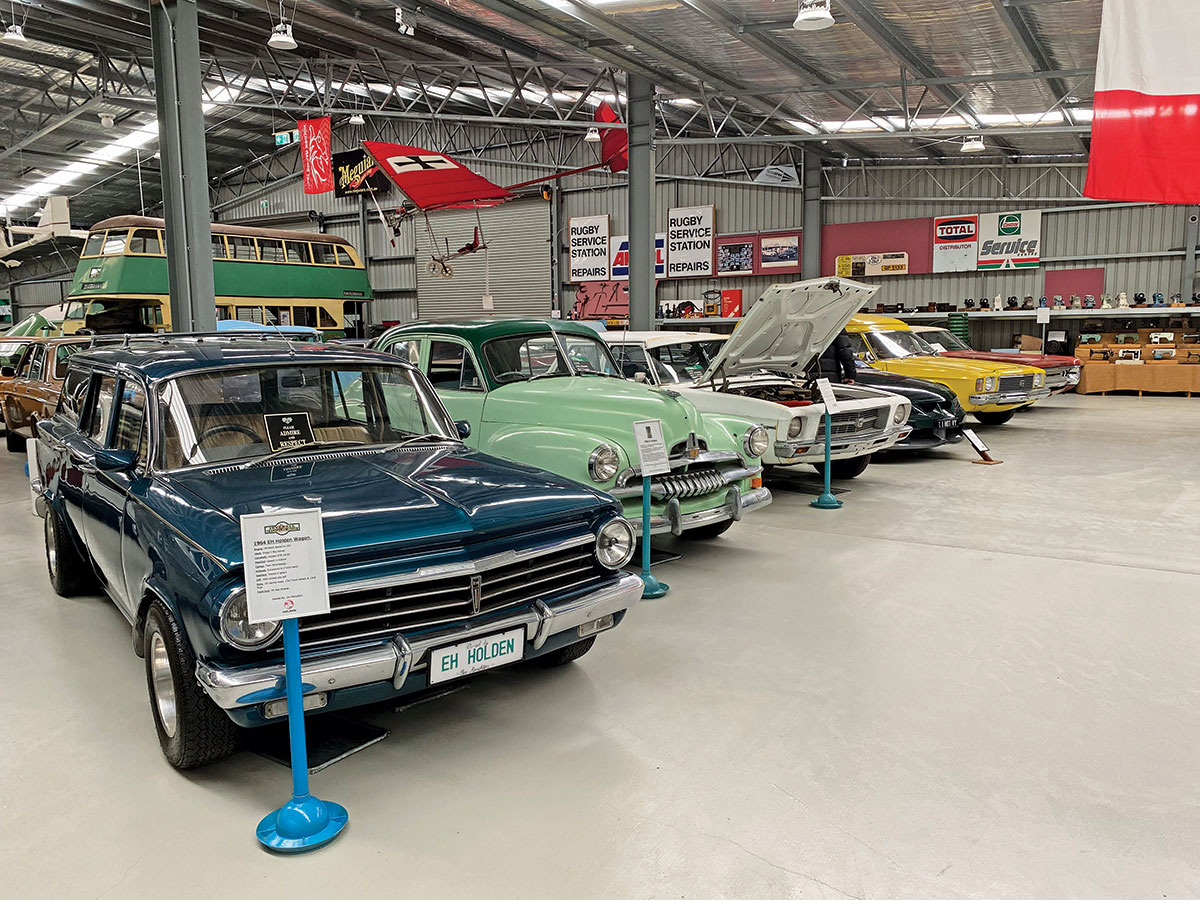
We spent a few days in the region, and I can recommend visits to the Wing Hing Long Museum in nearby Tingha for an insight into the Chinese influence on the region’s tin mining; the Pioneer Village and National Transport Museum; Topper's Mountain Wines — one of the highest altitude wineries in Australia — and the beautiful Copeton Dam where you can fish for Murray Cod year-round.
Moree
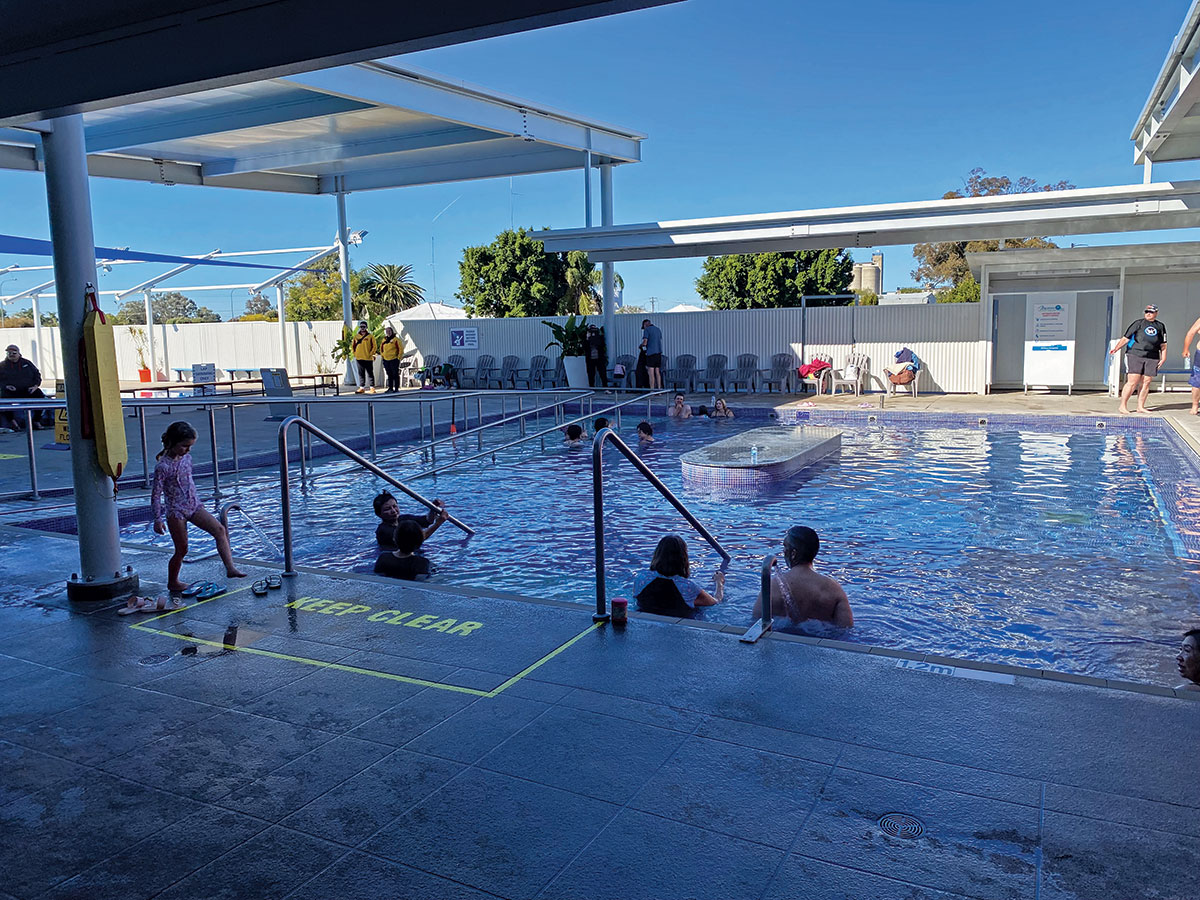
Known as the artesian capital of Australia, the Moree Plains sit on top of the Great Artesian Basin, just below the Queensland border on the black soil plains. The many mineral springs make this area very popular with tourists who flock to soak in the warm soothing waters.
The artesian water that flows from the ground into the hot pools around Moree began as rain in southeastern Queensland tens of thousands of years ago and ever since has been flowing through the porous Artesian rock basin, picking numerous minerals and salts until it surfaces again.

Basin springs have enabled Aboriginal and Torres Strait Islander people to occupy dry inland areas of Australia for more than 40,000 years, and communities maintain cultural, social and spiritual connections with Basin springs and their associated ecological communities and landscapes.
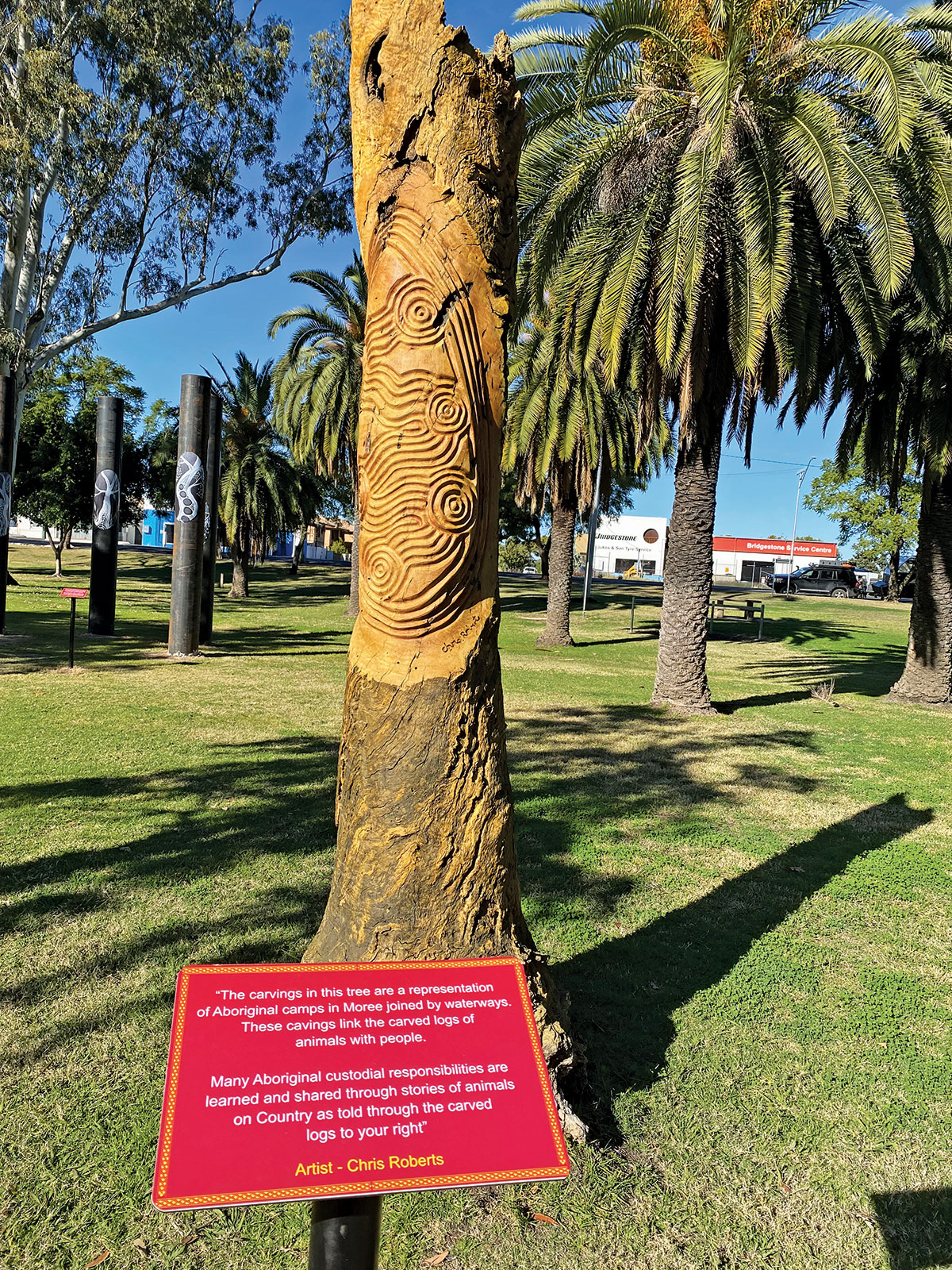
The Moree bore started flowing in November 1895. The original bore was located on the same spot that is today the Moree Artesian Aquatic Centre, just a short detour off the main drag. The centre has a large artesian wellness pool where the waters come straight out of the ground at temperatures in the high 30 degrees Celsius. I can attest to feeling amazing after an artesian soak. I would have liked to emerge looking 20 years younger, but alas not.
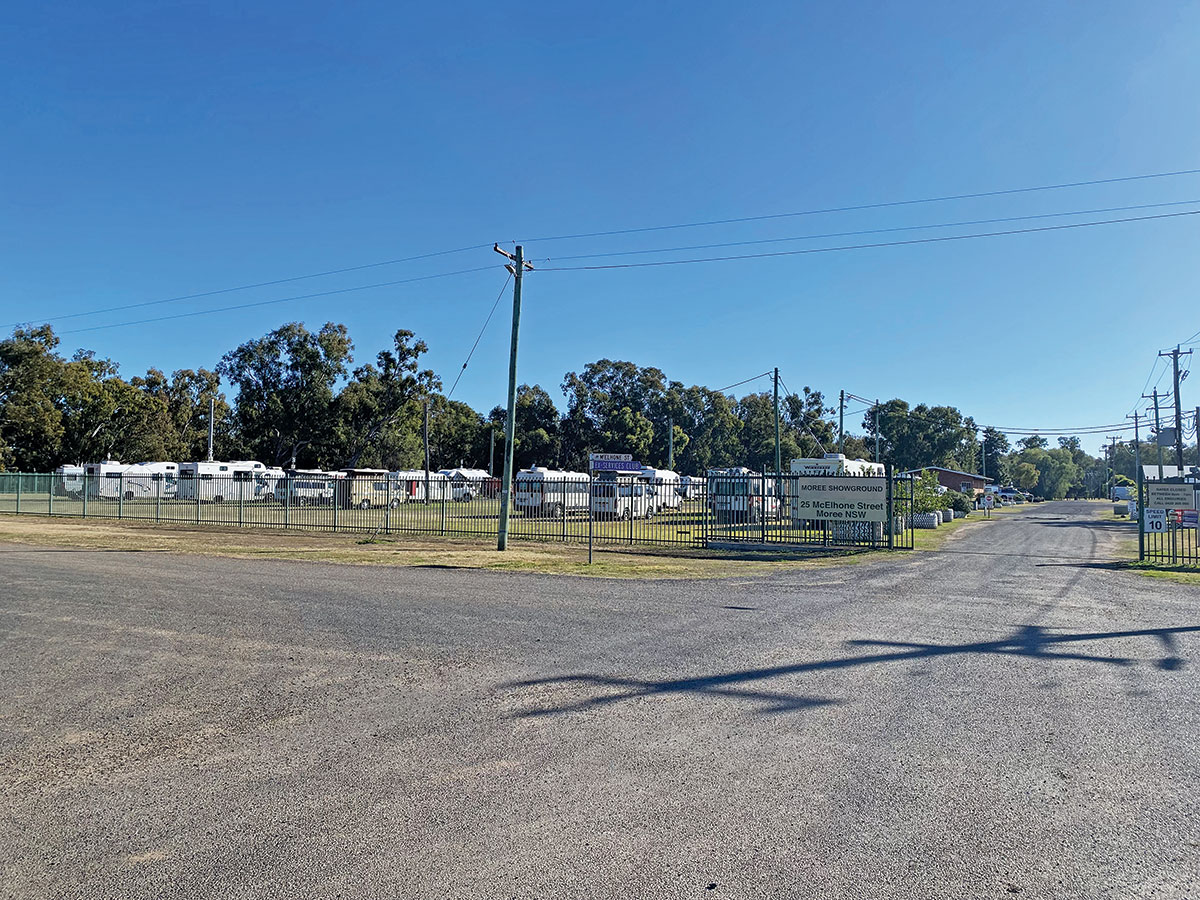
Research backs the century-old claims about the health benefits of bathing in these waters and judging by the number of campers at the Moree Showgrounds the night we were there, many travellers are keen to test the theory.
Goondiwindi
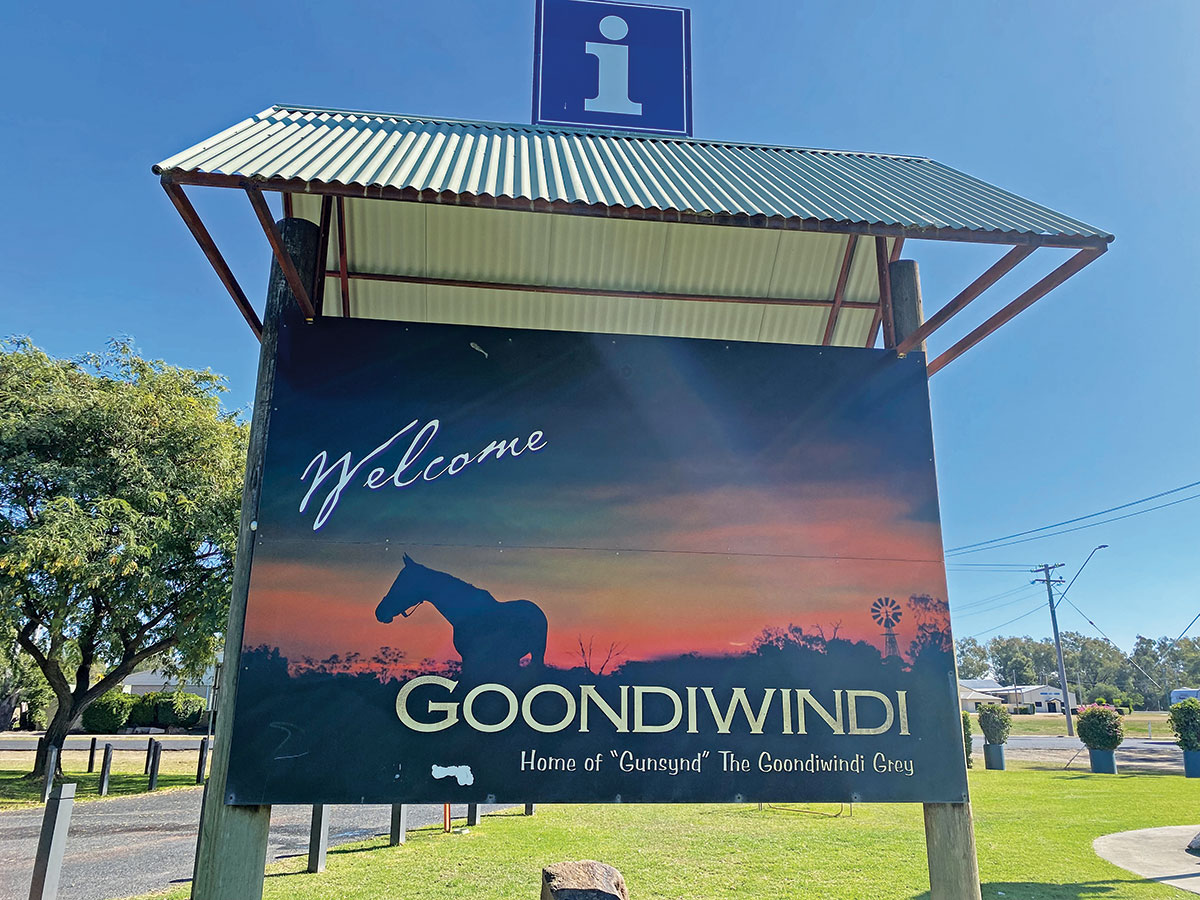
Just over the Queensland border on the Macintyre River, Goondiwindi signals the end of the Newell Highway. This is a popular stop for travellers to enjoy the tree-lined streets and attractive parks and to soak up some of that warm Queensland sunshine.
Goondiwindi is most famous for being the home of racehorse Gunsynd — the Goondiwindi Grey — who features prominently on welcome signage and a statue in Apex Park.
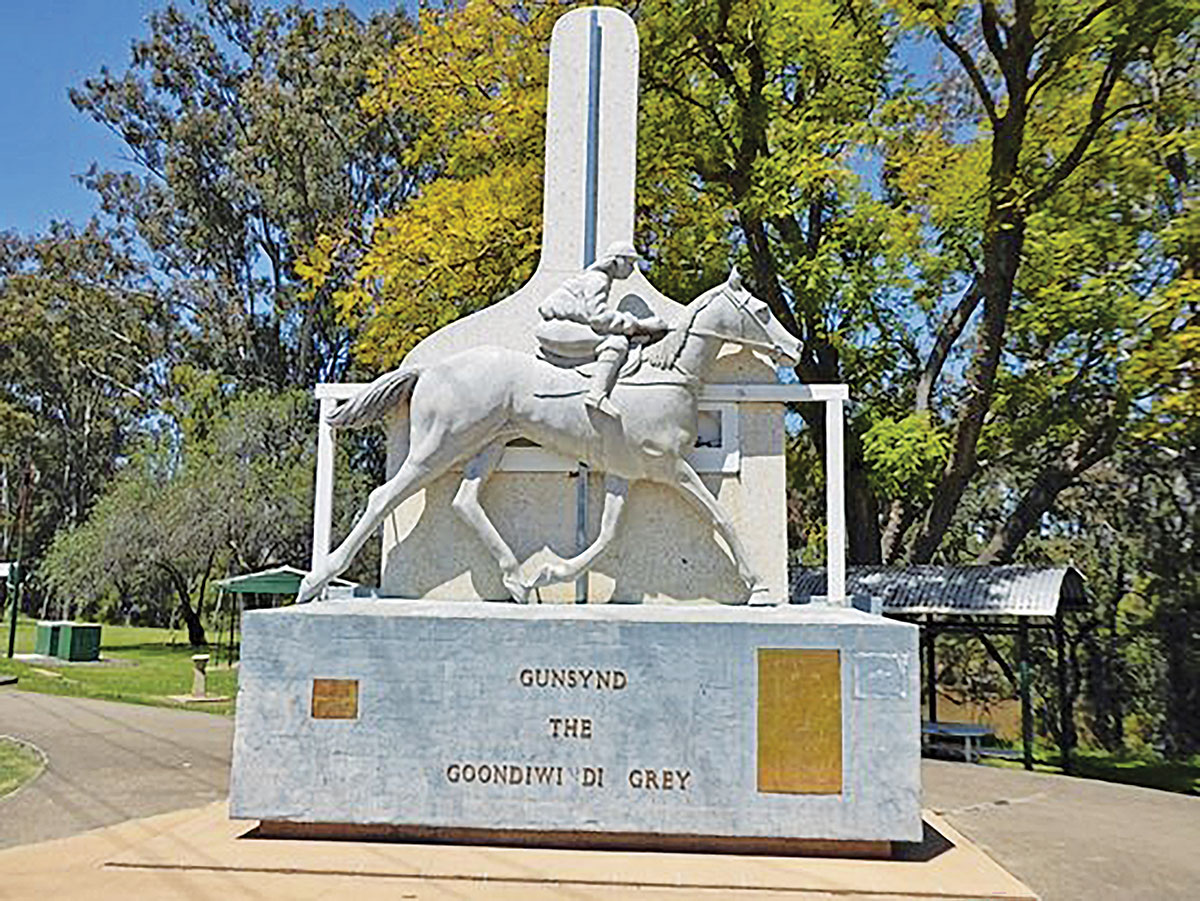
As a colt he was purchased at the bargain price of $1300 in 1969 by Goondiwindi grazier Winks McMicking who had formed a syndicate with three other local men. He was put in the hands of a former Goondiwindi station manager trying to break into horse training in Brisbane by the name of Bill Wehlow. They named the horse Gunsynd as a short version of Goondiwindi Syndicate.
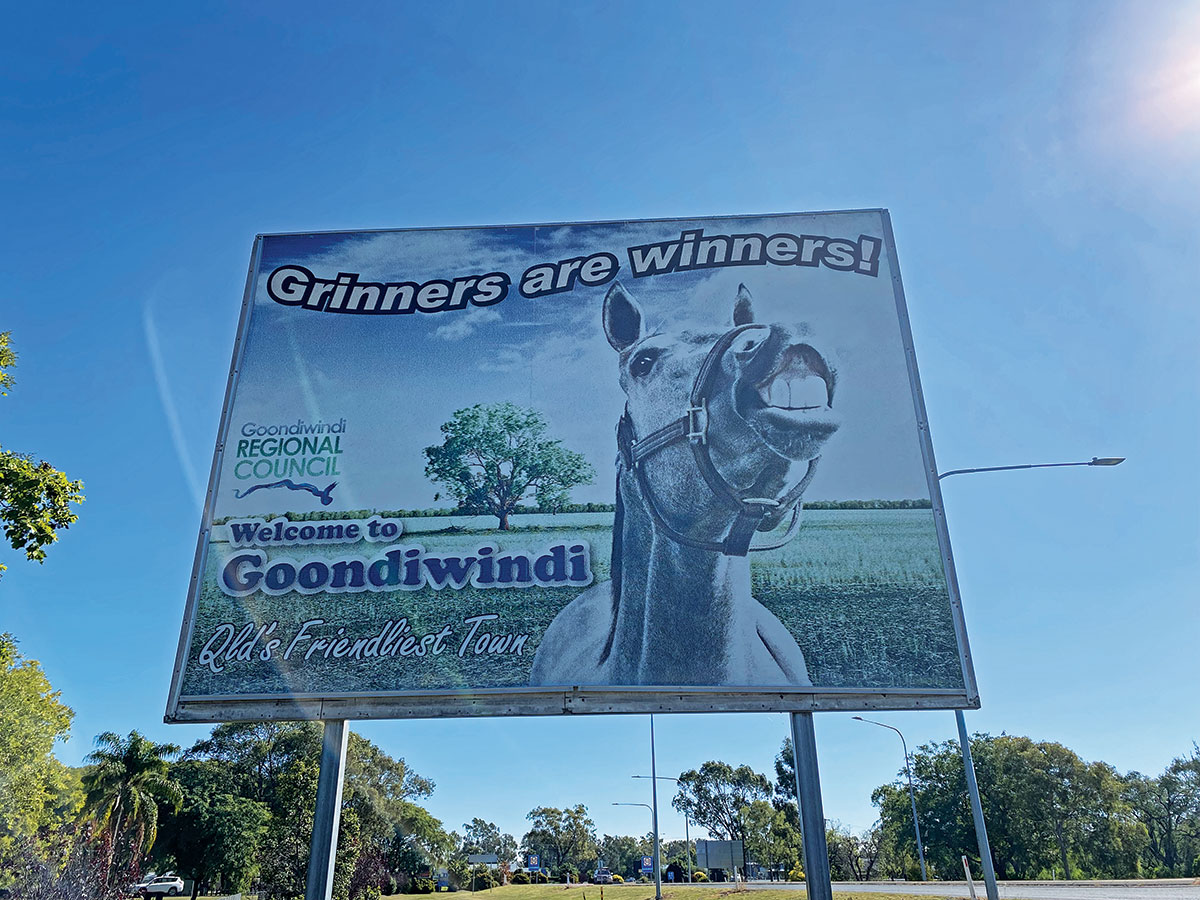
Gunsynd enjoyed early success under Wehlow's training, but it was after he was transferred to the stables of legendary trainer Tommy Smith that Gunsynd started to win major races. In 1971–72 Gunsynd enjoyed seven straight victories then a famous win in the Cox Plate at Moonee Valley, which made him the biggest money winner in Australian racing history. Gunsynd then ran third in the Melbourne Cup carrying 60.5 kilograms. Gunsynd was unanimously voted Horse of the Year for 1972.
We didn’t linger in Goondiwindi, but there’s plenty to see and do before heading off to your next Queensland destination.
The Newell is a quick, straightforward route to Queensland if you are heading for warmer climes, but if you have some time on your hands, it’s worth stopping at some interesting and unique towns along the way to see what they have to offer.
Head here for more information about travelling the Newell Highway.
Contact details
Inverell Caravan Park
21 Glen Innes Road
Inverell NSW 2360
P: 02 6722 3036
E: admin@inverellcaravanpark.com.au
Moree Showground Caravan and Camping
Corner Warialda and McElhone Streets
Moree NSW 2400
P: 0428 205 098
Narrabri Big Sky Caravan Park
11–35 Tibbereena Street
Narrabri NSW 2390
P: 02 6792 1294
E: narrabri@southerncrossparks.com.au
Parkes Showground
52 Victoria Street
Parkes, NSW 2870
P: 0467 622 580
Pilliga Pottery and Barkala Farmstay
2630 Dandry Road
Coonabarabran NSW 2357
P: 02 6842 2239
E: pilligapottery@gmail.com
Red Earth Estate
18L Camp Road
Dubbo NSW 2830
P: 02 6885 6676
THE NEXT STEP
Are you ready to experience the freedom of the open road? Don't wait - Find your dream getaway now!
RELATED ARTICLES:
The jewell off the Newell: Inverell, New South Wales







